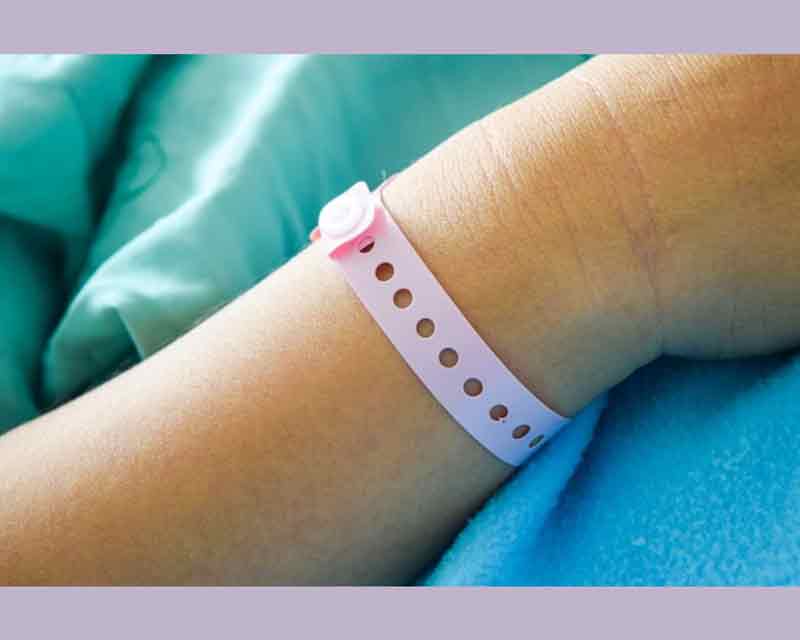Best Practices for Introducing a Patient Identification Band System in Your Clinic
Best Practices for Introducing a Patient Identification Band System in Your Clinic
Blog Article
Exploring the Various Kinds Of Patient Identification Band Used in Clinical Facilities
In the intricate globe of healthcare, the vital function of Patient Identification bands commonly goes unnoticed. These bands, differing from basic paper wristbands to sophisticated RFID bands, form the backbone of Patient security methods, making sure accuracy in Patient Identification. The vast variety of these bands, each with its distinct advantages and limitations, is often neglected. As we navigate via this subject, one may obtain insight right into the subtle intricacies and important significance of such bands in medical centers.
Comprehending the Relevance of Patient Identification Bands
While they might seem like simple devices, Patient Identification bands play a vital duty in clinical centers. These bands offer as an essential tool for confirming Patient identification, stopping medical errors associated to misidentification. Patient Identification bands likewise help in improving management jobs, ensuring exact record-keeping and invoicing.
Typical Paper Wristbands: Their Usage and Limitations
Traditional paper wristbands have been a staple in Patient Identification throughout numerous medical facilities. While their usage prevails, they nurture specific restrictions that may influence their effectiveness in Patient administration. This section will concentrate on the range of their application and the intrinsic disadvantages related to their usage.
Paper Wristbands: Use Extent
In the realm of Patient Identification, paper wristbands have actually long held a critical role. These bands are usually utilized in outpatient setups, where the Patient's keep is momentary. Despite improvements in technology, the modest paper wristband continues to be a trustworthy and cost-efficient remedy for Patient Identification in different medical care circumstances.
Limitations of Paper Wristbands
Regardless of their prevalent usage, paper wristbands are not without their downsides. In addition, paper wristbands typically do not have the technical abilities of even more modern options, such as barcoding or RFID chips, limiting their functionality to merely showing composed information. Paper wristbands can trigger discomfort or skin irritability to some clients, especially when worn for extended periods.
Barcoded Wristbands: Improvements in Patient Identification
While Patient Identification has actually long been a crucial facet of healthcare, the advent of barcoded wristbands symbolizes a substantial jump onward. These bands take advantage of the simpleness of barcoding innovation, permitting for Patient info to be promptly checked and accessed. They boost the speed and accuracy of Patient Identification, minimizing the threat of medical errors associated with misidentification. Barcoded wristbands are economical, very easy to create, and eliminate handwriting mistakes typical with hand-operated systems. Nevertheless, they are not without limitations. While they provide renovations over traditional bands, the barcode can end up being used or smudged, making it unreadable. Despite this, barcoded wristbands stay an important device in contemporary health care settings, representing the crossway of technology and Patient treatment.
Superhigh Frequency Identification (RFID) Bands: an Action In The Direction Of Futuristic Health Care
The evolution of Patient Identification bands has brought about the emergence of Radio Regularity Identification (RFID) Bands (patient identification band). These ingenious tools present vital advantages for healthcare facilities, supplying a more reliable and highly progressed ways of Patient Identification. The application of RFID in medical care is a substantial step towards a much more futuristic method to Patient management and safety and security
Understanding RFID Bands

RFID Bands: Key Advantages
Accepting a future where technology and health care combine, radio regularity Identification bands use a number of vital advantages. Primarily, these bands improve Patient security by providing accurate, instantaneous Identification, thus decreasing clinical mistakes. RFID bands can keep a substantial quantity of Patient data, including case history and allergic reactions, making it possible for individualized care. They also streamline management jobs, as the automated data access replaces hand-operated processes, boosting performance and minimizing documents. RFID bands provide real-time monitoring of patients, see crucial in risky atmospheres such as surgical treatment or intensive treatment. Lastly, these bands are durable and resistant to environmental variables, guaranteeing constant performance. On the whole, RFID bands stand for a considerable development in Patient Identification innovation, profiting both people and healthcare suppliers.
Applying RFID in Healthcare
These bands provide a smooth method to track and recognize people, guaranteeing their security and improving effectiveness in therapy procedures. RFID bands decrease clinical mistakes by providing exact Patient Identification, which is essential in avoiding misdiagnosis or wrong medicine management. Thus, the application of RFID bands is a considerable action in the direction of boosting Patient security and healthcare distribution.

Color-Coded Wristbands: Assisting in Quick and Accurate Diagnosis
In the bustling environment of a medical facility, color-coded wristbands have actually emerged as crucial tools for swift and accurate Identification of a client's medical problem. These wristbands, used by people, bring specific shades that match to various clinical problems or standings. This system is made to offer immediate visual cues to health care carriers, enhancing Patient safety and care high quality.
Approaches for Reliable Implementation and Monitoring of Patient ID Bands
Accomplishing ideal use of Patient Identification bands necessitates a well-structured technique for their execution and monitoring. The More Help primary step involves training all health employees on the relevance of appropriately using and reading these bands. Second of all, hospitals should standardize the usage of ID bands throughout all departments, making sure harmony and lowering inconsistencies. Regular audits should be conducted to validate adherence to policies and to rectify any inconsistencies. Patient education is additionally important; patients need to understand the purpose of the bands and the requirement for their constant wear. patient identification band. It's important to have a back-up plan in place, such as barcode scanning or biometrics, to make certain that Patient Identification published here is never endangered.
Verdict
Patient Identification bands are crucial in medical centers to make certain safety and security and accuracy. Standard paper, barcoded, RFID, and color-coded wristbands each hold one-of-a-kind advantages, ranging from cost-effectiveness to sophisticated information storage space and instant medical notifies. Efficient execution and monitoring of these bands can considerably lower clinical errors, improve performance, and improve general Patient treatment. Therefore, understanding and making use of these Identification devices is vital for keeping high requirements in health care.
These bands, differing from simple paper wristbands to innovative RFID bands, create the backbone of Patient safety procedures, making certain accuracy in Patient Identification.The development of Patient Identification bands has brought about the introduction of Radio Regularity Identification (RFID) Bands. Overall, RFID bands represent a substantial advancement in Patient Identification innovation, profiting both clients and medical care providers.
RFID bands minimize clinical errors by providing exact Patient Identification, which is important in stopping misdiagnosis or wrong medicine administration. Patient education and learning is also essential; clients need to recognize the objective of the bands and the demand for their consistent wear.
Report this page